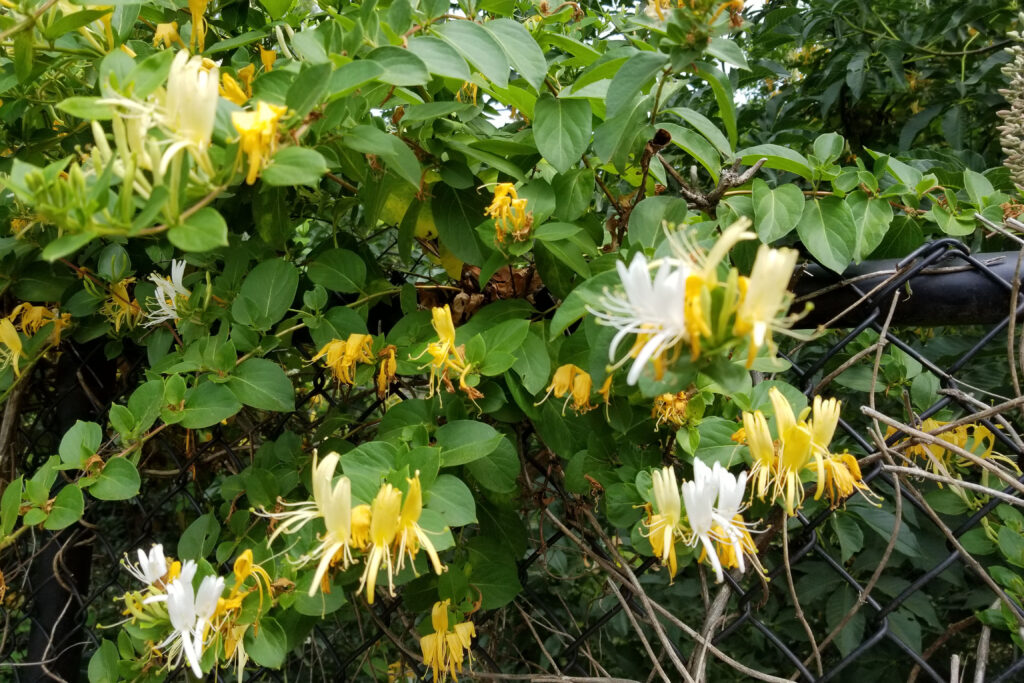Say ‘Buh-Bye’ to Strangle Vines for Good
Strangle vines are a common problem for Texan homeowners, and vine removal can be difficult once they have taken hold in your yard. These vines are known for their aggressive growth habits, quickly wrapping around and suffocating other plants and trees and damaging the structures they climb. In addition to damaging property and killing other plants, strangle vines can also create trip hazards (a good reason to get liability coverage!) and make your yard unsightly.
However, with the right approach, you can effectively remove these invasive plants and restore your yard to its former beauty.

1. Get to Know the Enemy
There are strangle vines that grow naturally throughout Texas — for instance, trumpet vines. But the biggest threats come from non-native species that can take over your garden by beating out local plants for space. Examples of invasive strangle vines include kudzu, English ivy, and Japanese honeysuckle.
2. Identify Your Target
If you’re dealing with strangle vines, the first step is to identify them. To know what you’re dealing with for sure, take a leaf to your local garden center. Alternatively, you can use one of these online resources:
- Texas Invasives database
- Invasive Plant Atlas of the United States
- Pl@ntNet plant identification app
- iNaturalist
3. Cut It Out
Once you’ve identified the plant, it’s important to act quickly to implement vine removal techniques and prevent them from spreading further.
For quick relief, give your garden, house, or fence some breathing room. Carefully cut the vines away from the structures and plants they are suffocating. This can be done with a sharp pair of pruning shears or a small saw. Cut as close to the base of the vine as possible, taking care not to damage the plants or trees that the strangle vines are growing around.

4. Get to the Root of the Problem
With the foliage removed, you’ll have a better view of the ground and can see where roots have taken hold. Tie a ribbon around the main root stem to find it again easily. There are a few ways to attack the root of the problem.
5. Smother the Strangle Vines
All plants need sunlight to thrive, and that includes pesky vines. Piling on a heavy layer of mulch is the all-natural way to smother vines. Plastic sheeting is also an option, though it’s less eco-friendly. Simply cover and wait a few weeks.
6. Spray the Vine Roots
Concoct a 4:1 mixture of water and vinegar to spray down the vine root. Thoroughly drench the root stub and wait two to three days before removing the dead roots. Repeat if necessary.
7. When All Else Fails, Herbicide
When using herbicide, follow instructions carefully and be sure to apply it only as directed. Herbicide will kill any other plant it touches, so spray with care and temporarily cover other plants with plastic for added protection. There are different kinds of herbicides designed to kill different types of strangle vines:
- Systemic herbicide: for vines growing on buildings without contact with other plants.
- Glyphosate herbicide: for herbaceous vines in contact with other plants.
- Triclopyr herbicide: for large, well-established vines. This is the “nuke it” approach. When using this undiluted, paint it onto the root stub with a brush to avoid contact with other plants.

8. Nip It in the Bud
Unfortunately, there’s really no way to prevent strangle vines. Your best course of action is to catch them early and start the vine removal process before their roots take hold. To keep up with this, keep an eye on your garden and weed at least twice a year.
Last but not least, fill your garden with local and native plants to create a natural habitat. Not only will you prevent accidentally adding a non-native invasive species, but your plants will be less high-maintenance and take less water because they’re made for your climate.
Learn how to start a native garden here.
© 2023 Texas Farm Bureau Insurance



